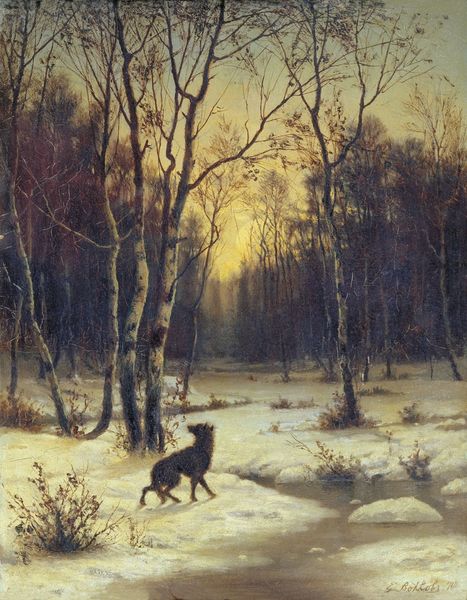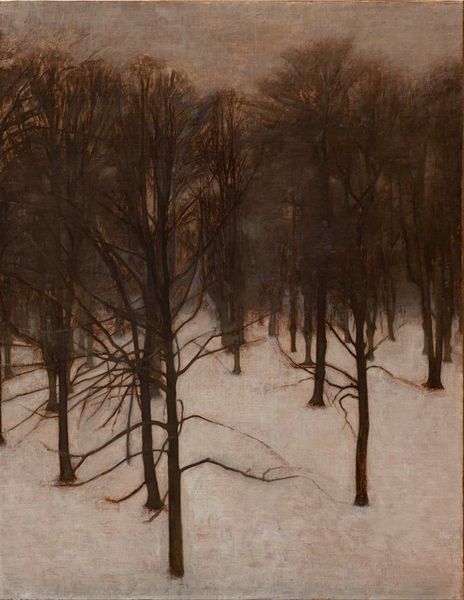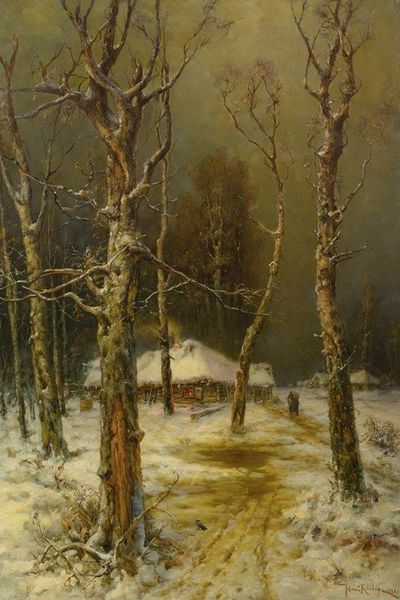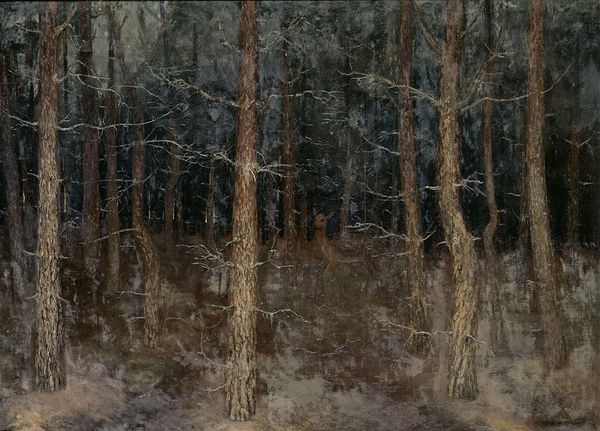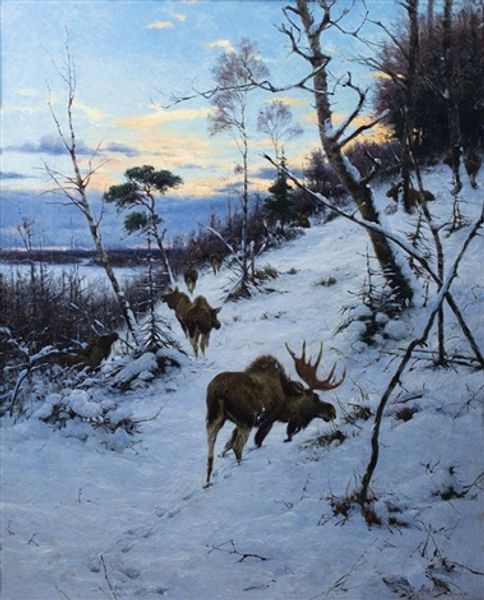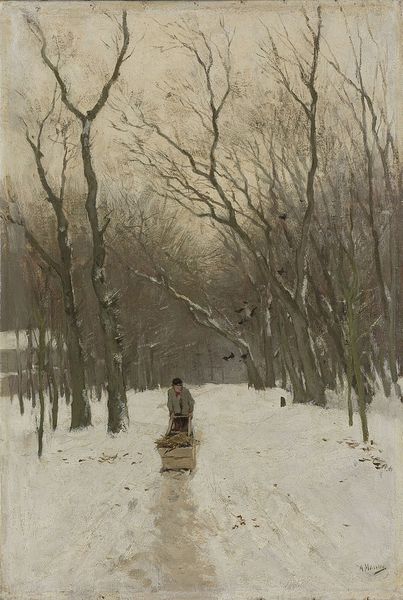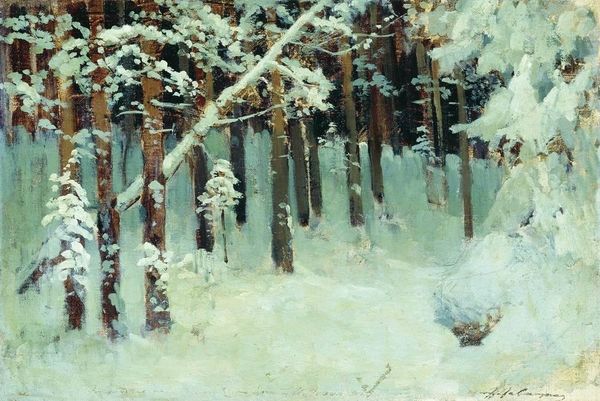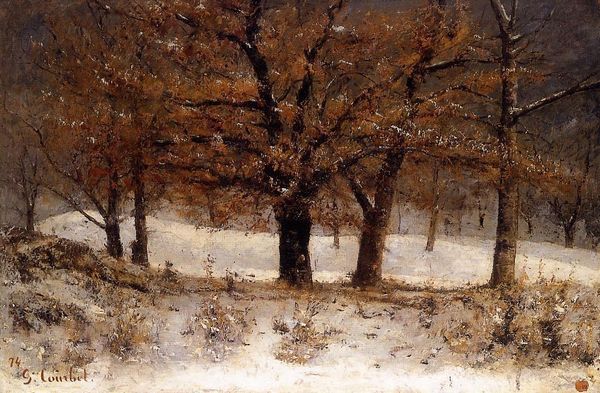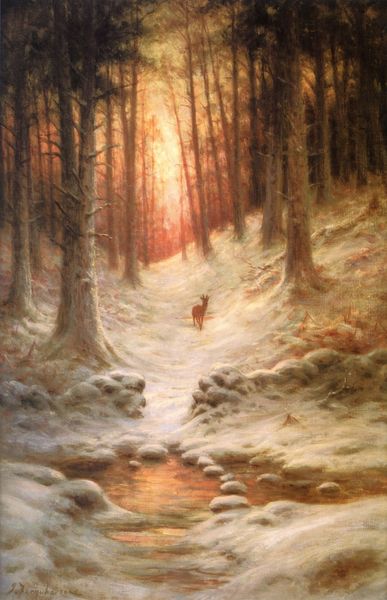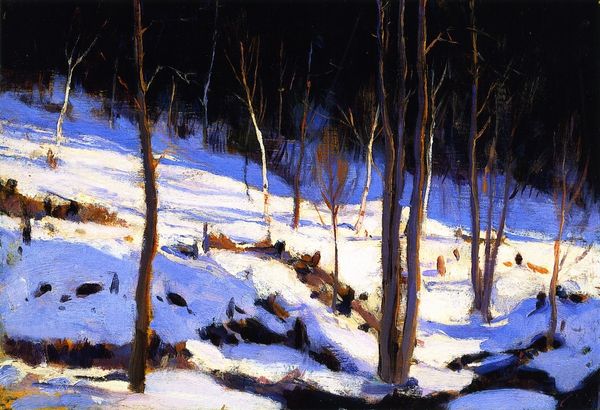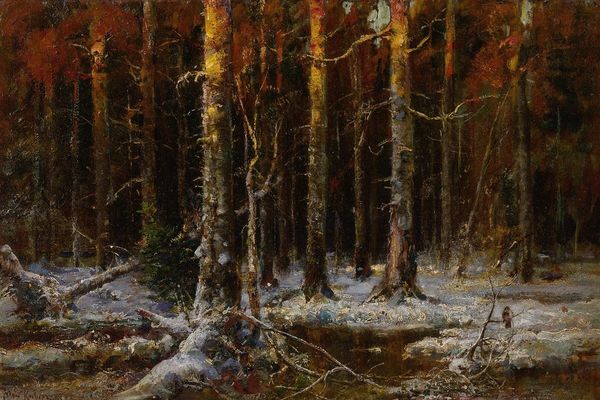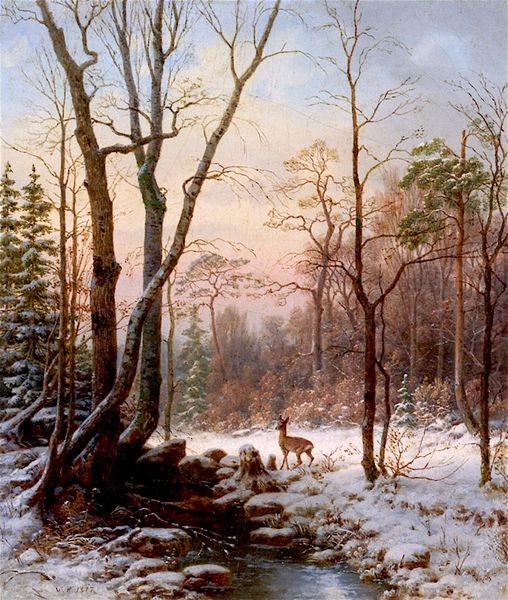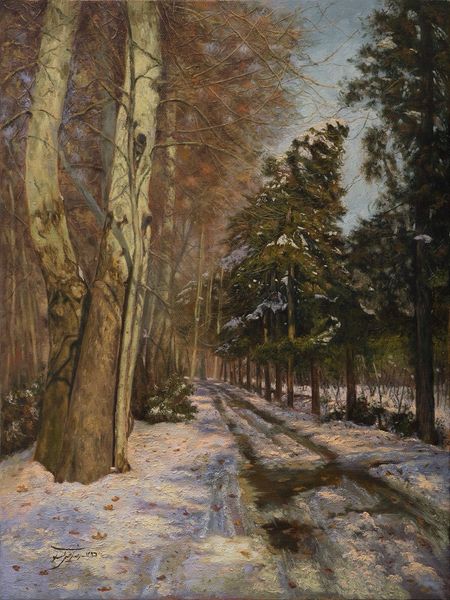
Dimensions: 55 x 45 cm
Copyright: Public domain
Editor: Here we have Isaac Levitan’s "In the Forest at Winter," painted in 1885 with oil. The scene has such a bleak and hushed atmosphere. What catches your eye, viewing it through an expert lens? Curator: Immediately, I consider the social and economic conditions shaping Levitan’s artistic production. How does his use of oil paint, a relatively accessible medium, democratize landscape art? The materiality speaks volumes. Editor: So you are saying his choice of materials wasn’t just about aesthetics? Curator: Precisely! Examine the impasto technique. The thick application, visible in the snow's texture, suggests a direct engagement with the physical world, reflecting the labor inherent in representing the Russian landscape. How does that level of realism speak to the average person experiencing similar harsh winters? Editor: I see what you mean! The textured snow shows labor beyond mere imitation, and makes me think about accessing art. But the fog almost softens the whole scene and its grimness? Curator: And who did the labor to extract and produce that oil paint, in turn enabling his artistry? The painting challenges traditional boundaries. The means of production, from pigment to canvas, is integral to interpreting Levitan’s romantic and realist portrayal of nature. Editor: I didn't consider the literal materials! So we can see landscape art, not just for pretty depictions, but reflections on broader societal inputs? Curator: Exactly. By focusing on the material process, we demystify the artist's hand and reveal the connections between art, labor, and consumption in late 19th-century Russia. It really broadens one’s appreciation.
Comments
No comments
Be the first to comment and join the conversation on the ultimate creative platform.
